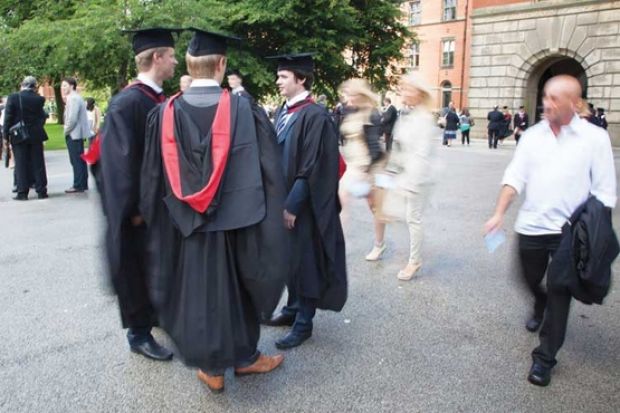This year’s 100 Under 50 table confirms that many of the UK’s new universities are among the best in the world. We have more institutions in the top 100 than any other country. This is a great testament to the work of the sector’s dedicated staff and talented students.
I recognise that this success does not come through luck or the strictures of politicians. Rather, it reflects the sheer hard work and determination that can flourish when the right incentives to excel, as well as a secure funding environment, are in place.
Our institutions are the most autonomous in Europe. This encourages success by providing the space to experiment and to focus on what works.
Many of the British institutions that have performed well in the ranking were founded in the 1960s on the heels of the Robbins report, which is 50 years old this year. Some of them, such as the universities of York, Lancaster and East Anglia, were actually conceived before the report was published. But the Robbins principle that “higher education should be available for all those who are qualified by ability and attainment”, as well as the report’s proposal to convert the Colleges of Advanced Technology – such as Brunel, Surrey and Bath – into universities, dramatically altered the British higher education landscape.
In 1963, there were fewer than 250,000 full-time students in the UK. In 2011-12, there were about 1.7 million full-timers, and the figure for all students in British institutions was about 2.5 million. So our success in this league table is part of Robbins’ legacy.
Our current reforms are designed to strengthen the UK higher education sector further. They include more flexibility on student numbers, a more sustainable funding regime and incentives for world-class teaching that are as strong as those in place for world-class research.
These changes are having a positive impact but we need to do more if we are to maintain our success in this particular league table. Many of the top-performing British institutions will soon be too old to be eligible and, if the UK is to continue to perform well against up-and-coming competitors in Asia and elsewhere, we cannot rest on our laurels.
Moreover, the appetite for higher education continues to grow around the world. That is why we need to maintain a process of rejuvenation. We must enable existing higher education institutions to shape their own missions. We must remove unnecessary obstacles in the path of new providers. And we must stimulate innovative forms of higher education provision, including online.
We have already reduced the student number threshold for university title from 4,000 to 1,000, and this has led to the establishment of 10 new universities, including the Royal Agricultural University, Newman University, Falmouth University and the University of St Mark and St John.
Sometimes we are accused of having lowered the bar to the prestigious title but these are high-grade institutions that were blocked from becoming universities simply because their small size reflects a particular specialism.
Six of the 10 new universities are already in the top 30 institutions for graduate employability. I hope many of them will feature highly in the 100 Under 50 table in future years – although as with many institutions in the ranking, they are not entirely new foundations, even if they are new universities: taken together, they have more than a millennium of history behind them.
We have also clarified the route to university title for alternative institutions not funded by the Higher Education Funding Council for England, which – quite rightly – have to meet the same criteria as their competitors. This is benefiting a mix of institutions.
For example, the not-for-profit Regent’s College has become Regent’s University and the College of Law has become the University of Law, the UK’s first for-profit university.
The end result of these changes is an even more diverse sector that is highly responsive to student choice and sensitive to changing demand.
Our older institutions continue to be world-class, as the other Times Higher Education league tables demonstrate. That is welcome, although as I travel around the world explaining the strengths of British education, I see how rapidly other countries are improving their academies. So it is only through innovation and playing to our strengths that we will fortify our position.
We must avoid insularity. By extending the international links made by British institutions and doing more to encourage other countries’ leading institutions to come and collaborate here in the UK, we will improve our domestic sector and secure our place on the world stage.
Register to continue
Why register?
- Registration is free and only takes a moment
- Once registered, you can read 3 articles a month
- Sign up for our newsletter
Subscribe
Or subscribe for unlimited access to:
- Unlimited access to news, views, insights & reviews
- Digital editions
- Digital access to THE’s university and college rankings analysis
Already registered or a current subscriber? Login
